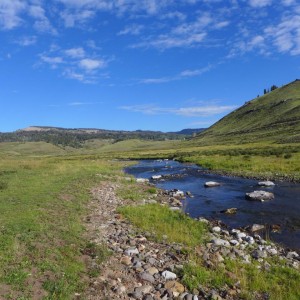***This article is not a substitute for the advice of an attorney.***
Today we have our second post in the “Questions from Tiffany’s Desk” series. In the past week, I have gotten four calls and emails asking questions similar to the one below.
Question: We read an article in the paper. What is going on in Kimble County with the Texas Commission on Environmental Quality (“TCEQ”) ordering a rancher to remove a dam from a stream on private property? What is the law regarding building dams across streams on private property?
Answer (Part I): The exact circumstances surrounding the issue in Kimble County are disputed and not clear. There have been two articles published in the Menard News recently discussing this issue. As often happens in disputes, the two sides of this issue wrote very different articles.
1. Runge Article: The first article ran October 10, 2013 and was written by Caroline Runge, the Menard County Water Control and Improvement District No. 1 manager. This article, titled “TCEQ Takes Private Property Without Notice Or Hearing,” reported that the TCEQ issued a fine and ordered a Kimble County Rancher to remove a dam on a creek running across his private property. The article stated that the TCEQ took this action after reclassifying the stream as “navigable.” [Read article here.]
2. Coval Article: The second article ran October 17, 2013 and was written by TCEQ Executive Director Zak Coval. This article, titled “No Taking of Private Property” explains TCEQ’s position that the landowner involved was impounding state water without a required permit. [Read article here.]
As these articles make clear, the parties involved have differing opinions as to the precise facts that led to this dispute and the removal of the dam.
Answer (Part II): Although complex, it is important to understand the law surrounding ownership of surface water and of streambeds in Texas.
First, it is important to remember that in Texas, surface water in a watercourse is owned by the State and held in trust for the public. It is not owned by the landowner on whose land it flows. To read a detailed blog on surface water ownership, click here. In order to use, store, or divert state water, a person generally must obtain a permit from the TCEQ. See Texas Water Code Section 11.021. An exception exists that allows a landowner to construct a dam or reservoir on his or her own property with normal storage less than 200 acre-feet of water for certain purposes, including non-commercial domestic or livestock purposes, non-commercial fish and wildlife purposes, or wildlife management. See Texas Water Code Section 11.142. If a dam or reservoir is larger than 200 acre-feet or is for other purposes, a permit must be obtained.
Second, ownership of streambeds in Texas depends upon whether the streams are “navigable.” If a streambed is non-navigable, then the streambed (and minerals beneath the streambed) are owned by the private landowner. The water in the stream, however, is owned by the state and, as described above, a permit is generally still required from the TCEQ in order to use, store, or divert surface water, even in a non-navigable stream. (The above-referenced exception for domestic and livestock diversions still applies and if an impoundment meets those criteria, no permit is necessary.) Navigable streambeds (including the water within the stream and minerals beneath it) are owned by the State of Texas and landowners are not permitted to build a fence, dam, or other structure to prevent persons from traveling unimpeded along a navigable waterway. See Texas Water Code Section 11.096. In fact, persons are able to travel down navigable streams even if the stream runs across private property.
Because ownership depends upon classification, it is important to understand the test for whether a stream is considered to be “navigable.” In Texas, there are two separate navigability tests. The first test is to determine if a stream is “navigable in fact” looks to determine whether the river or stream can serve as a “common highway for trade and travel” in its natural and ordinary condition. If the answer is yes, it is navigable in fact and the streambed is owned by the state. Courts interpreting this definition have considered whether commercial or pleasure boats could travel along the waterway and even whether logs could float down the waterway.
If the river or stream is not “navigable in fact,” it may still be “navigable in law” under the second test. The “navigable in law” test is based upon a Texas statute and looks at the size of the waterway. If the streambed maintains an average width of 30 feet from the mouth up, it is considered “navigable in law.” See Texas Natural Resources Code Section 26.001(c). This distance refers to the entire bed, not the portion where water may be flowing. Although the court is the final decision maker as to whether a stream is navigable in fact or in law, state agencies, including the TCEQ and the General Land Office often make these determinations as part of their rulemaking authority.













